| << Chapter < Page | Chapter >> Page > |
STEP 1
This is the notation of the round Viva la Musica .

Make a graphic representation of the melody in all three phrases.
| Phrase 1 | |
| Phrase 2 | |
| Phrase 3 |
STEP 2
Choose the correct description with regard to the melody:
| Phrase 1 | Makes a leap | Moves mostly step by step | ||
| Phrase 2 | Makes a leap | Moves mostly step by step | ||
| Phrase 3 | Makes a leap | Moves mostly step by step |
Choose the correct description with regard to the rhythm:
| Phrase 1 | Thrusts forward | Less movement and syncopation | Repetition of previous phrase | |||
| Phrase 2 | Thrusts forward | Less movement and syncopation | Repetition of previous phrase | |||
| Phrase 3 | Thrusts forward | Less movement and syncopation | Repetition of previous phrase |
STEPS 3 and 4
Divide into groups and follow the teacher’s instructions.
The colour tone changes because harmony is created. The same harmony is used throughout.
| Choose the word that is best suited: | ||
| HARMONY | RHYTHM | MELODY |
| How long or short the notes are | ||
| The melody | ||
| The sound of the combined notes |
STEP 1
This is a traditional Zulu children’s song: Siyanibingelela (We greet you).
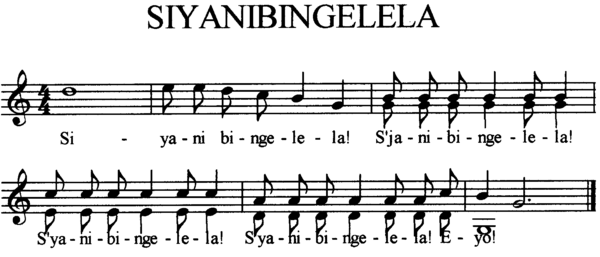
Divide into two groups (warm and cold) and follow the teacher’s instructions to sing the two-part song.
STEP 3
What does warm sound like, and what does cold sound like?
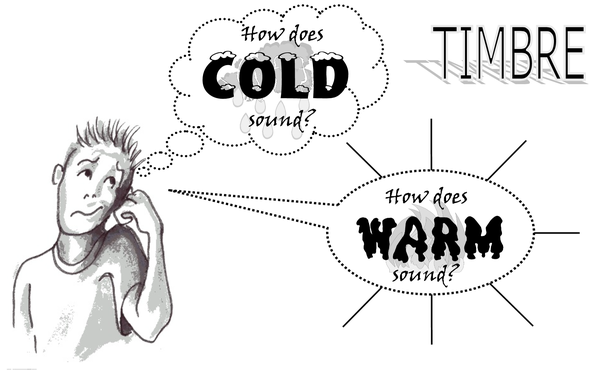
Try the following and listen to the difference:
| COLD | WARM |
| Clap with flat hands | Clap with cupped hands |
| Shake tin with pebbles | Place your hand on the tin, and then shake it. |
| Strike a hanging triangle with a metal stick | Hold the triangle in your hand, then strike it |
| Snap your teeth with your mouth open | Snap your teeth with your mouth closed |
| Clear, sharp, open sounds | Dull, closed sounds(more resonant) |
Add more examples, i.e. two different sounds on the same instrument.
STEP 4
Follow the teacher’s instructions and perform the song with an “instrumental” interlude.
Learn the following two songs:
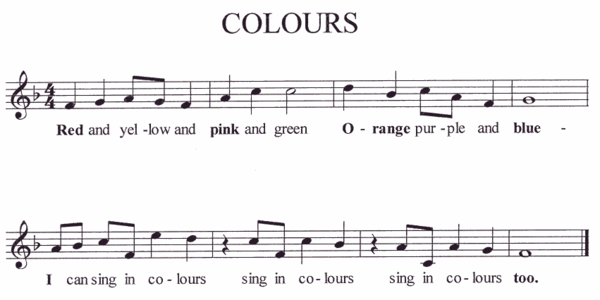
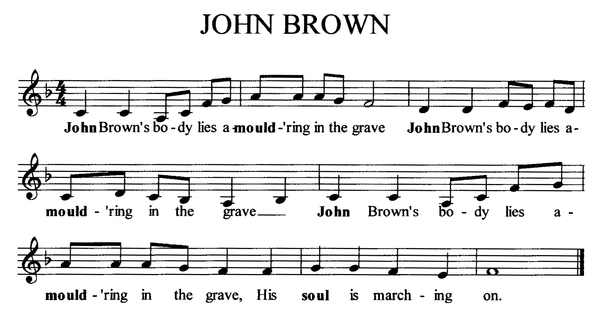
The two songs differ in character – They sound different. Why?
STEP 2
The class is divided into two groups e.g. girls (yellow) and boys (blue)
Girls (yellow) sing Colours and immediately afterwards the boys (blue) sing John Brown .
The two groups sing together! The two groups must first read through ? below quietly – in a whisper – before singing it.
This is not easy – keep practising until everyone starts on the right note and sings together. The educator can help you to join in at the right time.
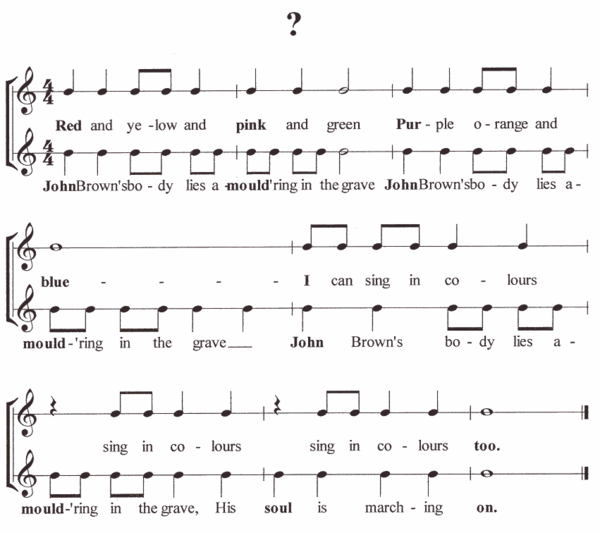
When two primary colours are combined, a new colour is created: Yellow + Blue = Green.
When two songs are sung together we also get a new “colour” or song, but some of the elements of the music must be the same.
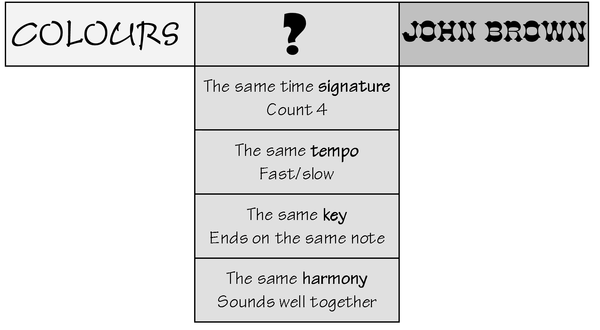
Your teacher will add the accompaniment. Can you hear that the same chords are used, otherwise it will not sound right.
Now sing ? using la-la or any other sound.

STEP 6
Sing your school song or Nkosi Sikilel’iAfrica and John Brown together!
It does not sound good!
Why not?
| Learning Outcomes(LOs) |
| LO 3 |
| PARTICIPATION AND COOPERATION The learner is able to display personal and social skills while participating in arts and culture activities as an individual and in a group. |
| Assessment Standards(ASs) |
| We know this when the learner: |
| GENERALIn regard to 3.1 – 3.6 below: |
|
|
|
| VISUAL ARTS(3.6) |
|
| MUSIC (3.5) |
|
|
|

Notification Switch
Would you like to follow the 'Arts and culture grade 6' conversation and receive update notifications?